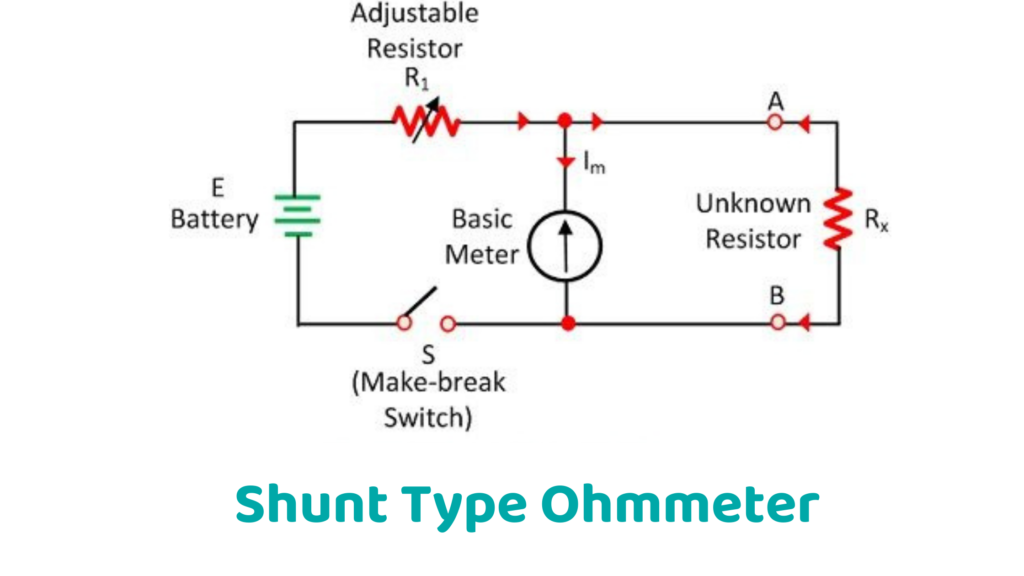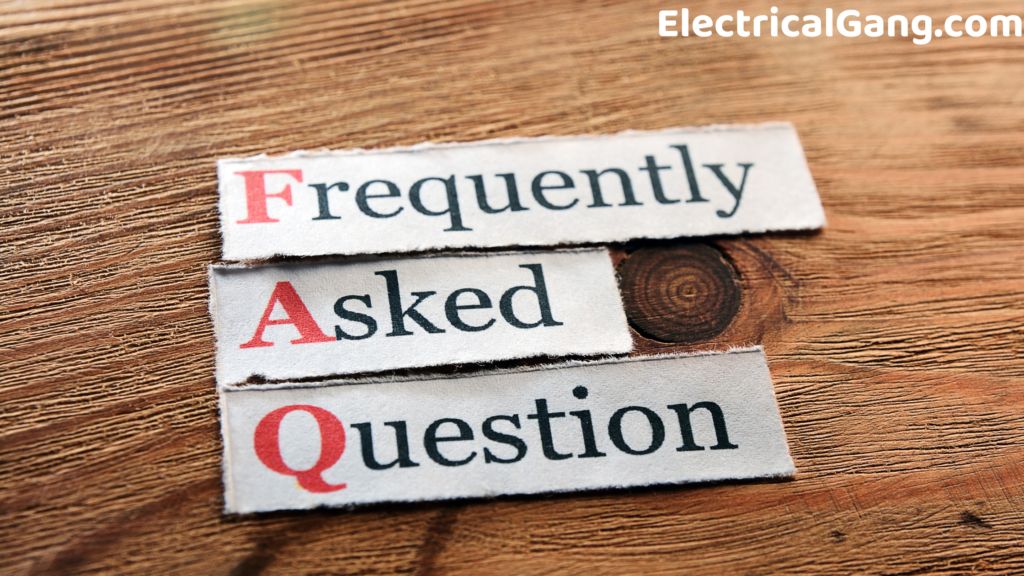
There are many types of meters available in the market for testing electronic devices. Instruments such as ammeters, ohmmeters, voltmeters and multimeters, circuit resistance, voltage, and current are used to test the wiring connection for testing the electronic device. Whether its connection is true or not.
Therefore the circuit can be tested using a device called an ohmmeter. But it is unsuitable to connect this device to any circuit for testing of soldering components without recognizing the working concept. However, to become a skilled technician it is necessary to be an expert in doing many things more than reading any test device.
In today’s article, we will see what an ohmmeter is and talk today about an overview of the circuit’s working, types, and applications.
Suggested Read: What is a Voltage Sensor? | Types of Voltage Sensors
What is an Ohmmeter?
An ohmmeter can be interpreted in such a simple language that it is a type of electronic device that is mostly used to measure the electrical resistance of a circuit and its unit of resistance is an ohm. Electrical resistance is a measure of how much an object resists the flow of current through it.
Different types of meters with different sensitivity levels like micro, mega, and milli ohmmeter are available in the market. A micro ohmmeter is used to calculate very low resistance with high accuracy at a precise test current. And such ohmmeters are used in bonding contact applications.
A micro ohmmeter is a portable device used primarily for calculating current, and voltage as well as testing diodes. This meter includes many selectors to select the function of selection and it is up to you to select most of the measurements.
A mega ohmmeter is mainly used to calculate a large resistance value. Milli ohmmeter is useful for calculating low-resistance at high accuracy to check the value of the electrical circuit.
Construction of ohmmeter:
The construction of an ohmmeter circuit is a combination of a milli ohmmeter with a set of resistance in series and a continuous battery. The following parts of an analog ohmmeter are included.
- Display: Different scales are displayed to measure different electrical quantities. A non-linear ohmmeter scale is present at its apex.
- Pointer: The value of the measurement on that scale varies depending on the principle of the resistance.
- Range selector knob: There is a knob in the center for selecting various functions.
- MilliAmmeter or Microammeter: For a given constant voltage, the current through the ammeter will change if the resistance changes. This will give the output resistance in ohms (Ω).
- Multimeter Dial: The rotary dial is around a knob with various series selectors.
- Jack/Ports: Two input jacks are provided to connect the probes.
- Probes/Leads: It comes with two probes- Black Probe and Red Probe.
Ohmmeter Working Principle:
The working principle of an ohmmeter is that it consists of one needle and two test leads. The deflection of the needle is controlled by the battery current. Initially, two test leads of the meter can be combined and shortened to calculate the resistance of the electrical circuit.
Once the two leads of the meter are shortened then the meter can be replaced in the fixed range for proper operation. The needle again comes to the highest point of the meter scale and will be the highest current in the meter. The circuit diagram of the ohmmeter is as follows.

Once the circuit is tested it is necessary to separate the test leads of the meter. Once the two test leads of the meter are connected to the circuit the battery is discharged. The rheostat will be adjusted when the test leads are shortened. The needle of the meter can be reached from the lowest position which is zero. And then both test leads will have zero resistance.
Suggested Read: What is a Clamp Meter | Construction of Clamp Meter
Types of Ohmmeter:
Ohmmeters are classified into three main types which are discussed briefly below:
| Sr.No | Types of Ohmmeter |
| #1. | Series Type Ohmmeter |
| #2. | Shunt Type Ohmmeter |
| #3. | Multi-Range Ohmmeter |
#1. Series Type Ohmmeter:

Image Credit: CircuitGlobe
The component of this type of ohmmeter that we want to measure can be connected to the meter in series. The resistance value can be calculated using the shunt resistor R 2 using the parallel D’Arsonval movement R 2 can be connected to the battery in the resistance range and to the R 1 resistance. The two terminals in the measurement component series are connected by A as well as B.
Whenever the component to be measured is zero, there will be a large flow of current through the meter. In such a situation the shunt resistance can be improved until the full load current is specified. For this current, the needle turns sideways in the direction of 0 ohms.
Whenever the measuring component separates from the circuit. When the circuit resistance is unlimited in the circuit and the current is converted into current. The needle of the meter turns to infinity. When the current flows and zero resistance do not flow once the current flows, the meter shows infinite resistance.
When the measuring component is connected in series with the circuit and the resistance of that circuit is high. Then the meter needle will change to the left. And if the resistance is slight then the needle turns to one side to the right.
Suggested Read: What is the Voltage Divider Rule? | Voltage Divider Calculation
#2. Shunt Type Ohmmeter:

Image Credit: CircuitGlobe
A shunt-type ohmmeter can be connected whenever the component is connected in parallel with the battery. This type of circuit is used to calculate the resistance of a low value. The following circuit can be made from the meter, battery, and measuring component. The measuring component can be connected to terminals A and B.
When the resistance value of the component is zero then the current in the meter will also be zero. Similarly, when the resistance of a component becomes large, the flow of current through the battery and needle indicates a full-scale curve in the left direction. In meters of this type, there is no current on the scale in the direction of the left as well as in the direction of infinity in their right direction.
#3. Multi-Range Ohmmeter:

Image Credit: CircuitGlobe
The range of this type of ohmmeter is very high, and this ohmmeter has to include an adjuster, and the range of this meter can be adjusted by the adjuster as required.
Consider for example that we use a meter to calculate a resistance below 10 ohms. So initially we need to fix the resistance value to 10 ohms. The measuring component is connected to the meter in parallel. The intensity of the resistance is determined by the dissection of the needle.
Applications of Ohmmeter:
Some applications of ohmmeters are as follows:
- Testing of the electronic component is carried out in large quantities in the electronic lab in engineering.
- This is used for debugging small ICs. Such as for PCBs and other content that needs to be run on sensitive devices.
- This meter can be used to ensure the integrity of the circuit. This means that the circuit will be disconnected if there is sufficient current or current flow through the circuit.
Most Commonly Asked Questions:

What do you use an ohmmeter for?
An ohmmeter is a device for measuring electrical resistance that can be expressed in ohms. The resistance to measure in a simple ohmmeter can be connected to the instrument in parallel or in series.
How does an Ohm meter work?
The working principle of an ohmmeter is that the pointer is deflected in the meter when a current passes through the circuit. When a pointer moves to the left of the meter it represents a high resistance and responds to a low current. The resistive measurement scale is nonlinear in ohmmeter and analog multimeter.
What is the meaning of the ohmmeter?
An ohmmeter is a device for indicating resistance.
What does a reading of 0 ohms mean?
Ohm is a measure of resistance. So “zero ohms” doesn’t mean resistance. All conductors give some resistance, so technically, there’s no such thing as zero ohms.
How do you calculate ohms?
- To find the Voltage, (V) [V = I x R] V (volts) = I (amps) x R (Ω).
- To find the Current, (I) [I = V ÷ R] I (amps) = V (volts) ÷ R (Ω).
- To find the Resistance, (R) [R = V ÷ I] R (Ω) = V (volts) ÷ I (amps).
- To find the Power (P) [P = V x I] P (watts) = V (volts) x I (amps).
Like this post? Could you share it with your friends?
Suggested Read –
Would like to how to get how much amperage is going through a wire.
You can measure it with the help of a clamp meter or you can also measure it with the help of a current transformer.
This is a great guide! Very good explanation.
This is a great guide! I’ve never used an ohmmeter before, but this is a great introduction.